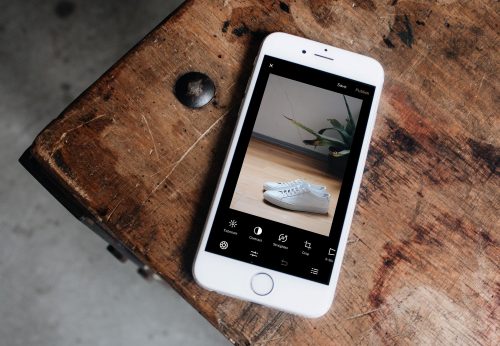How Technology Has Changed Shopping Behaviours
It’s undeniable that technology has changed the world. From new medical capabilities to simply being able to check your funds with the click of a button, technology has found a way to make everything more efficient.

It has also made information far more accessible, and shoppers are using this to their advantage — one study shows that between 2015 and 2017, for example, searches for footwear reviews shot up by 85 per cent. Alongside British supplier of men’s chukka boots, Frank Wright, we explore just how far technology has impacted shopping.
Before purchasing a product
Window shopping is a thing of the past — now, the digital window shows the best deals for customers to compare. Social media was the first choice when respondents were asked where they get online inspiration from for their purchases. This behaviour has paved the way for social media influencers and celebrity endorsements too. In fact, the search term ‘influencer marketing’ experienced a 325% increase in searches between 2016 and 2017 — demonstrating company and agency interest in the new technique.
Although visits to physical stores were once falling, weekly bricks-and-mortar shoppers are up from 40% in 2015 to 44% in 2018.
It has also been noted by Google that search terms are becoming much more specific. Rising search terms between 2015 and 2017 included ‘kids light up shoes’ and ‘men’s Italian dress shoes’. This is possibly because we often know precisely what product we desire and are confident that our search will yield relevant results due to the vast amount of available information on the internet.
Shopping has been simplified, but on the other hand, consumer interaction with a brand has become much more complex. This potential user-to-business engagement allows an individual to connect more with a brand, through social media contact and additional communication channels (such as live chat and 24/7 phone lines).
Less ‘try’, more ‘buy’?
What about the age-old lesson to ‘try before you buy’? Although visits to physical stores were once falling, weekly bricks-and-mortar shoppers are up from 40% in 2015 to 44% in 2018. This could be due to people using shopping as a social activity. What new opportunities does this bring to retailers? Retailers with physical stores have the chance to reduce their stock levels on-site and use the newfound space to create a more enjoyable, sensory experience for shoppers.
Purchases via mobile phones are also on the increase. In fact, statistics show that mobile commerce more than doubled between 2013 and 2018, rising from 7% to 17%. It’s looking likely that mobile shopping sales will soon surpass PC-based buying, which is currently at 20%.
This suggest that customers are far more content to not try before they commit to a purchase. The delivery and returns process has been made so easy by many retailers in order to encourage customers to order their products first and then try them at home. Customers are getting used to the convenient delivery service too. In fact, 25% of customers said that they wouldn’t continue with their orders if one-day delivery wasn’t available.
The technological future of shopping
The high street is certainly struggling to keep up in the digital age. So, what does the future look like for the shopping industry?
The next stage could be faster delivery times, as this is perhaps the only downfall of online shopping versus shopping on the high street — you don’t get your item right away. There is discussion from some online retailers of a 30-minute drone delivery, and almost 40% of customers would consider this as a method too! We can also expect to see more engaging stores as companies try to encourage more store visits.
Influencer marketing is also likely to stick around for the foreseeable. But, due to the rapid speed of technological advancements, it’s hard to predict exactly what’s around the corner.
Sources
- https://www.thinkwithgoogle.com/feature/mobile-search-behavior/#/
- https://www.pwc.com/gx/en/industries/retail-consumer/consumer-insights-survey.html
- https://www.socialmediatoday.com/social-business/rise-influencer-marketing-infographic
- https://www.forbes.com/sites/forbescommunicationscouncil/2017/06/20/the-future-of-retail-how-well-be-shopping-in-10-years/#21188bbe58a6
